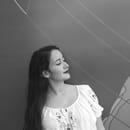This fall semester brings a new season of visiting artists to SAIC. Here’s the schedule for the remaining talks:
Danh Vo: Wednesday, October 3, 6:00 p.m. Rubloff Auditorium at Columbus
Sumakshi Singh: Monday, October 8, 6:00 p.m. Rubloff Auditorium at Columbus
Jeremy Deller: Monday, October 15, 6:00 p.m. Rubloff Auditorium at Columbus
Eyal Weizman: Tuesday, October 23, 6:00 p.m. Rubloff Auditorium at Columbus
Ibrahim Mahama: Monday, November 5, 6:00 p.m. Fullerton Hall 111 S. Michigan Ave.
Visiting Artists:
Amanda Williams
Born in Chicago, Amanda Williams has continued to make artwork about the urban landscapes of her home city from the Bridgeport on the South Side.
“Color(ed) Theory,” her most famous project to date, describes by her as a “multiyear project that explored how academic and theoretical definitions of color map across veiled language used in American media/popular culture to describe racially charged city spaces.”
In Color(ed) Theory, she paints Englewood houses that were set to be destroyed in vivid colors, bringing a last breath of life to the homes and making a powerful statement on “how colors have socially constructed associations that are inextricably linked to the politics of race and class in America.” She photographs these pieces when she’s finished, leaving a beautiful piece that blends two of her identities: a background in architecture and her upbringing on the South Side of Chicago.
Cassils
Cassils’ artwork is a form of performative sculpture, as they use the body and, specifically, bodybuilding,to talk about issues relating to vulnerability, repression and questioning gender binaries. As a prominent trans artist, Cassils performs “not as a crossing from one sex to another but rather as a continual process of becoming, a form of embodiment that works in a space of indeterminacy, spasm and slipperiness.” Their work is primarily documented through photos as well as artistic videos often superimposed with calm tones in the background as a contrast to the boldness of their performances.
Sumakshi Singh
A former professor and graduate student at SAIC, Singh’s work is interdisciplinary like many of our own artistic practices. Her pieces range from multimedia installations to fibers, as well as paintings and drawings. She involves many aspects of nature and fantasy as well as illusion in their work, often linking back to ideas surrounding culture. Her work is largely metaphorical and illustrates another perspective on life surrounding animations and the imagination.
Jeremy Deller
A London-born artist, Deller’s work is based on concepts regarding modern culture. He takes elements from other prominent pop culture figures such as David Bowie and Andy Warhol, and implements them into his projects through diverse mediums ranging from video to performance. His work also delves into modern political conflicts and expressesthem through artwork and performance, such as in his piece “It Is What It Is: Conversations About Iraq, a road trip from New York to Los Angeles with an Iraqi citizen and a US war veteran, towing a car destroyed in a bomb attack in Baghdad.”
Eyal Weizman
Weizman works with digital programming and software to create visual methods of investigation, specifically having to do human rights organizations, NGO’s (Non-Governmental association) worldwide and environmental law. He founded a group called Forensic Architecture, which gathers together experts to research for “international prosecutors, human rights organizations and political and environmental justice groups.” The group creates interactive digital graphs,which plot instances of injustices worldwide, both to inform the public of real data regarding these conflicts as well as aiding the previously mentioned agencies in finding justice for those afflicted.
Ibrahim Mahama
Based in Ghana, visiting artist Ibrahim Mahama bases his work on the politics and implications of materials in architecture. With the help of others, he collects common materials such as cardboard and creates massive structures out of them, initiating a conversation about how these materials inhabit the urban landscape. These structures often resemble large houses or buildings and create a contrast to the typical concrete used in modern buildings, which also exposes an economic subtext in materials used in architecture.


